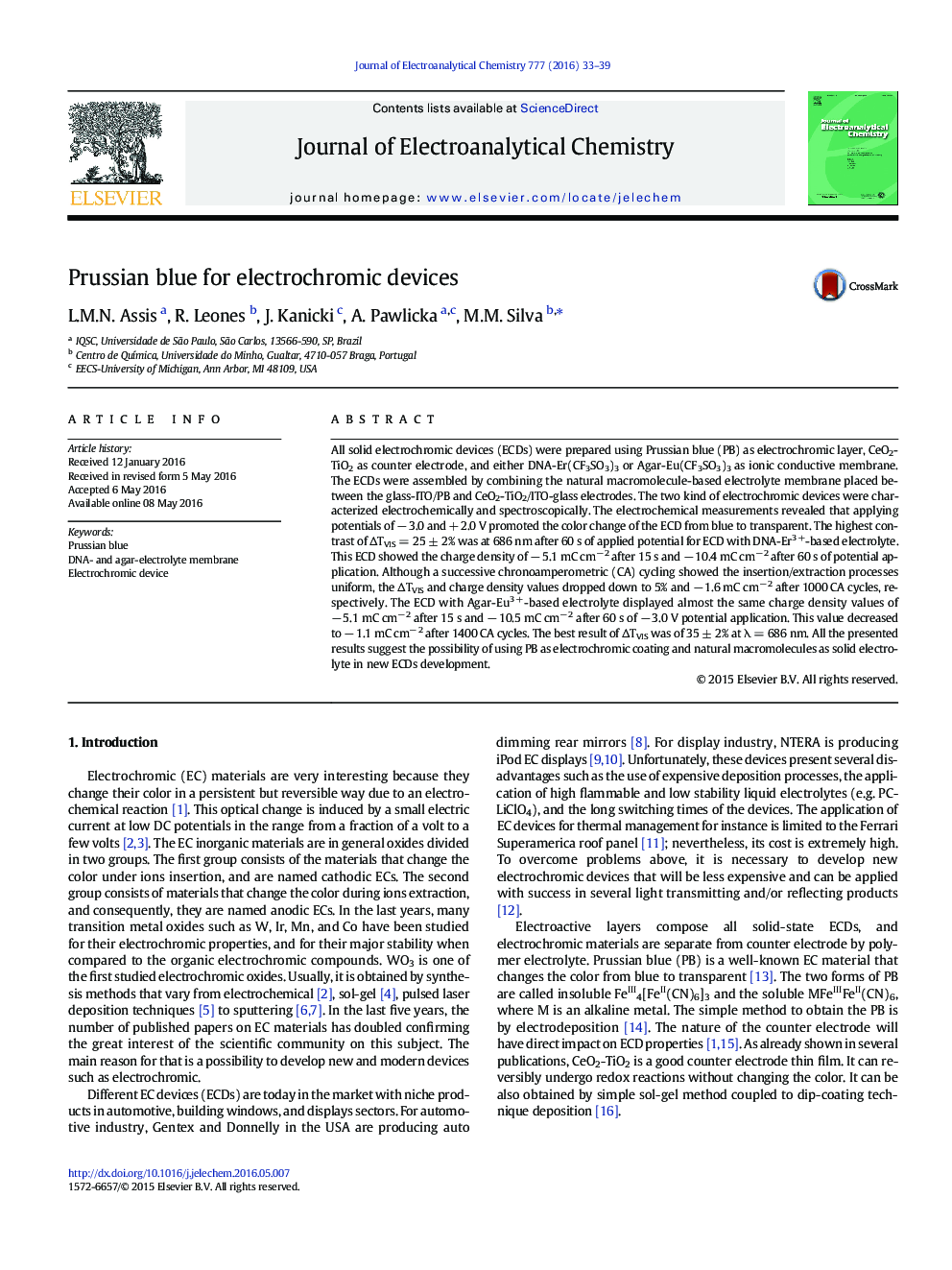| Article ID | Journal | Published Year | Pages | File Type |
|---|---|---|---|---|
| 217757 | Journal of Electroanalytical Chemistry | 2016 | 7 Pages |
•The membranes were prepared by solvent casting method.•Prussian blue (PB) as electrochromic layer and ionic conductive membrane•Natural macromolecules as solid electrolyte in new ECDs development
All solid electrochromic devices (ECDs) were prepared using Prussian blue (PB) as electrochromic layer, CeO2-TiO2 as counter electrode, and either DNA-Er(CF3SO3)3 or Agar-Eu(CF3SO3)3 as ionic conductive membrane. The ECDs were assembled by combining the natural macromolecule-based electrolyte membrane placed between the glass-ITO/PB and CeO2-TiO2/ITO-glass electrodes. The two kind of electrochromic devices were characterized electrochemically and spectroscopically. The electrochemical measurements revealed that applying potentials of − 3.0 and + 2.0 V promoted the color change of the ECD from blue to transparent. The highest contrast of ΔTVIS = 25 ± 2% was at 686 nm after 60 s of applied potential for ECD with DNA-Er3 +-based electrolyte. This ECD showed the charge density of − 5.1 mC cm− 2 after 15 s and − 10.4 mC cm− 2 after 60 s of potential application. Although a successive chronoamperometric (CA) cycling showed the insertion/extraction processes uniform, the ΔTVIS and charge density values dropped down to 5% and − 1.6 mC cm− 2 after 1000 CA cycles, respectively. The ECD with Agar-Eu3 +-based electrolyte displayed almost the same charge density values of − 5.1 mC cm− 2 after 15 s and − 10.5 mC cm− 2 after 60 s of − 3.0 V potential application. This value decreased to − 1.1 mC cm− 2 after 1400 CA cycles. The best result of ΔTVIS was of 35 ± 2% at λ = 686 nm. All the presented results suggest the possibility of using PB as electrochromic coating and natural macromolecules as solid electrolyte in new ECDs development.
